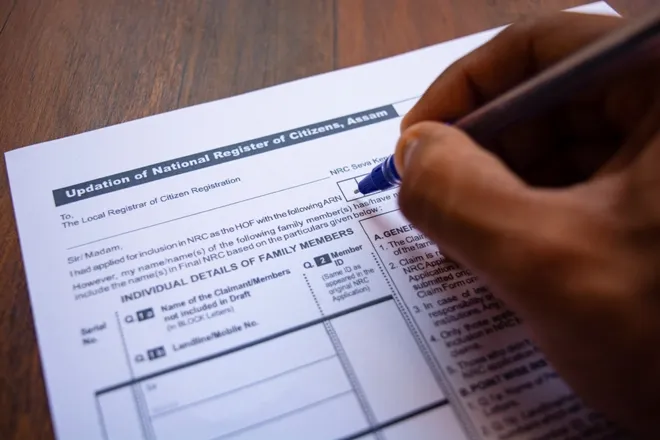A large section of people in Assam fears that infiltrators across the border will outnumber them in the future.
Following Bangladesh’s stance on NRC, it is now evident that India has to deal with the outcome of NRC, alone. The pertinent point is whether the government has chalked out a future roadmap for NRC.
‘Implementation of NRC Considered To Be of Exclusionary Intention’
NRC was first implemented in 1951 based on census data available then. Recently, the NRC was updated in Assam following the directive of the Supreme Court after a petition was filed by a non-government organisation from the state seeking a remedy to the problem of illegal migration.
The final list published in 2019 included a total of 3,11,21,004 out of the 3,30,27,661 applicants. The 19 lakh people, who have been excluded in the final list, have been promised to be equally treated as citizens of India till they have exhausted all the redressal options.
Around 100 Foreigners Tribunal has been established in Assam to resolve cases of the illegal migrants. Besides, they have the option of moving to the regular courts if they do not get a satisfactory response.
The problem regarding NRC further intensified following some whispers about its nationwide implementation, that resulted in wide scale protests.
Implementation of NRC was largely considered to be of exclusionary intention, targeting one particular community. The Union government, however, has repeatedly informed that it had no such motivation. Despite the claim, people remain suspicious of the government’s intentions about the NRC.
Normally, issues like citizenship are a prerogative of the sovereign state. The NRC issue shows that citizenship is not always considered as an internal affair, especially when the sole purpose of such an initiative is to identify foreigners.
Illegal migration from Bangladesh has been the root of the NRC initiative in Assam. Experiences suggest India’s initiative to tackle the problem of foreigners internally have been insufficient.
Failure of the Illegal Migrant Determination Tribunal (IMDT) established in Assam, following the enactment of IMDT Act 1983, which was scrapped by the Supreme Court in 2005, has been the biggest example.
Thus, the government has to think of an alternative as the NRC has not proven to be a suitable solution to the problem either.
NRC Exposes Flaws in Governance Mechanism
The NRC has put forward some of the weaknesses of India’s governance mechanism that need immediate remedy.
Firstly, it has to address the governance delivery system in the grassroots, primarily in the border states, because the people have to submit identity proofs that were issued by the government.
By denying citizenship, will the government not question its own identity mechanism?
Secondly, it also highlighted the need to develop skills for holistic policy planning. The question arises, If none of the foreigners detected are sent back, what has been the purpose of the exercise that cost around Rs 1,200 crore of public money?
In an ethnically varied state like Assam, and given the focus of the NRC debate, majority of people might be happy if the migrants are dispatched to other parts of India, as this will help reduce the perceived burden on the state.
What guarantee exists in places where they will be resettled, that they will not face similar socio-political tensions as witnessed in Assam? Also, will this be humane because people who migrate largely do so out of despair and as the last resort?
The most common causes of migration are economic compulsions, persecution – religious, ethnic, racial etc – impact of natural disasters like floods, education and so on.
More significantly, since people have been living in a place with the idea of home, displacing them from that place may create significant psychological trauma, which often leads to various delinquencies. Have all these issues have been factored in?
The NRC remains an unresolved puzzle and the solution to it will be a test of time. What would be most crucial is to keep politics above the next steps.

